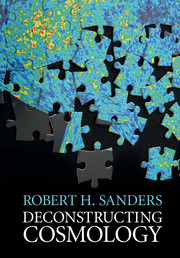Book contents
5 - The Concordance Model
Published online by Cambridge University Press: 12 October 2016
Summary
Consistency
In 1995, before the observations of the anisotropies in the CMB offered such a precise view of the Universe at the epoch of decoupling, and before the discovery of the accelerated expansion of the Universe through observations of distant supernovae, Jerry Ostriker and Paul Steinhardt in a letter to the journal Nature discussed the existing constraints on cosmological parameters. These were constraints arising from several distinct considerations: limits on the age of the Universe from globular-cluster lifetimes, measurements of the Hubble parameter H0 using the Hubble Space Telescope study of classical Cepheid variables and supernovae, the contribution of baryons to the mass budget of the Universe based upon the measured primordial abundances of light isotopes in the context of Big Bang nucleosynthesis, the measured and assumed universal ratio of baryons to dark matter in clusters of galaxies, and the total matter density required to form the observed structure in the Universe. They assumed that the properties required by inflation were absolutely valid: a flat universe in which the total Ω, including matter, radiation and vacuum energy, is equal to one and in which the primordial fluctuations were scale-free. They concluded that the model in concordance with all of these constraints was a low-density world (Ωm ≈ 0.3) dominated by a cosmological constant (ΩΛ≈ 0.7). In fact, it turned out that this concordance model was that which is supported, with much higher precision, by the subsequent observations of anisotropies in the CMB – altogether a remarkable success of inductive logic. The expansion and composition history of the concordance model are shown in Figure 5.1. It seems appropriate to refer to this model as the Friedmann–de Sitter model: it was pure Friedmann but is now becoming de Sitter.
Now we find ourselves in the situation where the primary empirical input to cosmology arises from the observations of the CMB. Although this is to be expected given the precision of the results, it is not altogether desirable to rely upon one phenomenon arising at one cosmic epoch to set the entire cosmological scenario. It would be as though geologists and paleontologists were to rely upon the continental formations, the composition of the atmosphere, ocean and rocks, and the dominant fossils that characterize some early geologic period, the Cambrian for example, to describe the geological and biological history and subsequent evolution of the Earth.
- Type
- Chapter
- Information
- Deconstructing Cosmology , pp. 49 - 65Publisher: Cambridge University PressPrint publication year: 2016



